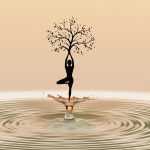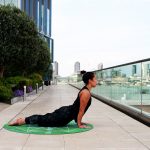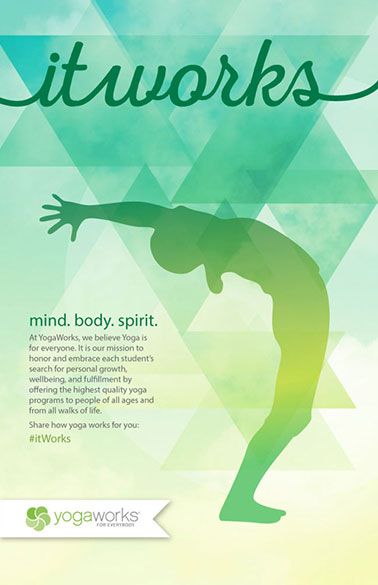Reach relaxation with Restorative Yoga

If you’re looking for intense relaxation of both the body and the mind, you might want to consider restorative yoga. It’s a gentle, nonphysical demanding style of yoga that’s suitable for all levels.
If you’re itching for serious relaxation—mentally, physically, and emotionally—consider restorative yoga. Gentler than many of the other yoga types, restorative yoga typically includes props to help perform poses for long periods of time.
What is restorative yoga?
“In restorative yoga, you’ll typically practice just a few restful postures that are meant to slow your body down and create a state of overall calm and relaxation,” says class instructor and yoga teacher Caley Alyssa in mbg’s 28 Days to Yoga Bliss class.
So where did this style of yoga come from? According to Restorative Yoga for Life by Gail Boorstein Grossman, restorative yoga poses originated from master yoga teacher B.K.S. Iyengar, who began to include props in his yoga sessions “so that poses could be modified and practiced without strain.”
Today, restorative yoga still uses a generous number of props (like bolsters, blankets, and blocks) to perform poses that are held for long periods of time (think several minutes), explains Lisa Maria, RYT-200, national workshop director at YogaWorks and certified yoga instructor. This style of yoga isn’t about tackling physically demanding poses but instead focuses on total relaxation of the body and the mind.
“The thing that’s so great about [restorative yoga] is that you have zero muscular engagement, so your muscles can really soften,” says Maria. The class might also include nonphysical elements, like visualization exercises, poetry readings, and breathwork, she adds.
Benefits of restorative yoga
“One of the best practices for healing and relaxing your body is restorative yoga,” Alyssa mentions in mbg’s 28 Days to Yoga Bliss class. But beyond deep relaxation, what can restorative yoga actually do for you and your health? There have been a number of studies that explore this topic. Some of those findings suggest that restorative yoga may:
- Improve sleep for certain people. In a study of 410 cancer survivors (96% of whom were women), people who participated in a four-week yoga program that featured both Hathaand restorative poses demonstrated greater improvements in sleep quality compared with patients who did not do yoga. Of course, this study focused on a very specific population, so we can’t extrapolate those findings for the general public. But the authors did conclude that the yoga program was a useful treatment for improving sleep and reducing the use of sleep medication among cancer survivors.
- Alleviate work stress for some folks. A small study of 20 female Japanese nurses working the night shift found that restorative yoga was effective for alleviating occupational stressamong that specific population. Again, these findings are limited to a narrowly defined category of people (i.e., female nurses working the night shift).
- Reduce weight and subcutaneous fat for obese patients
- An NIH-funded study involving 171 obese women found that participants who took part in a 48-week restorative yoga program lost more weight and significantly more subcutaneous fat than participants who did not do yoga and instead completed a stretching program.
What is a restorative yoga class like?
While there is no set structure for class, “just like in other [yoga] classes, there are twists, there are forward bends, there are backbends,” explains Maria. The difference is that in restorative yoga, you’ll hold these poses for much longer than usual, likely with the aid of props.
You might do twists and backbends over a pillow or bolster, for example. You could also find yourself lying on your back with a cylindrical bolster under your knees, sandbags on your palms, and a blanket over the body. As mentioned, your class may include nonphysical elements as well. You can expect to end class in a savasana-style pose, says Maria.
And in terms of what you need to bring?
Maria suggests wearing comfortable clothes and perhaps bringing a few warmer items—like cozy sweatpants and warm socks—in case you get cold (which could happen since you won’t be generating much body heat). You may also want to bring something to cover your eyes—like a lightweight eye pillow, a washcloth, or even a T-shirt—as this can help you further relax. You can place this over your eyes during really any portion of class, she says.
Who should try restorative yoga?
Restorative yoga is a style of yoga that is truly for everyone—you don’t need any baseline level of fitness or prior experience with yoga to take a class. It can also help more advanced yoga practitioners or athletes balance out the effects of more physically demanding workouts. “Restorative is such a fantastic style of yoga for every single person, no matter what kind of yoga you’re practicing; it is such a great component of a well-rounded practice,” says Maria.
Of course if you have a chronic health issue, serious injury, or are otherwise concerned about your ability to do restorative yoga, definitely check with your doctor before giving it a go.
Source:mindbodygreen















